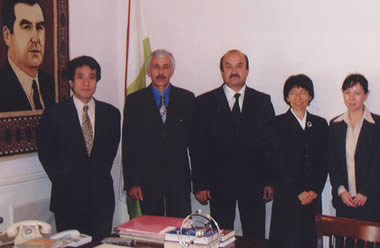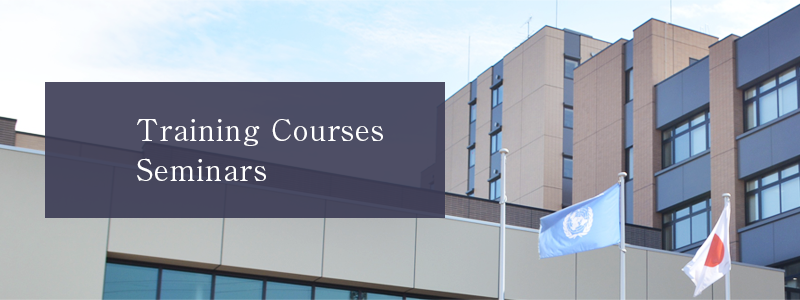Training Course on the Criminal Justice System for Tajikistan Criminal Officials
Main Subject
In Tajikistan, the government has not functioned properly since the civil war following the independence of the country. Although the Tajikistan government is striving to restore security, organized crime (involving drugs, weapons smuggling and money laundering) is rampant. In addition, refugees have poured in from Afghanistan and corruption and poverty are increasing. Domestic peacekeeping, countermeasures to juvenile delinquency and reinforcement of law and order, in accordance with due process, are urgent challenges.
| Course No. | Duration | Participants | No.of Participants |
|---|---|---|---|
| 3rd | 1 - 19 Mar. 2004 | Prosecutors and others | 15 |
| 2nd | 3 - 21 Mar. 2003 | Prosecutors and others | 10 |
| 1st | 4 - 22 Mar. 2002 | Prosecutors and others | 10 |

Onsite Research at the Court of Dushanbe City (Dushanabe, Tajikistan)
The main topics of the training course, which has been held three times since 2002, are listed below:
The First Course
- 1. Current situation of the criminal justice system of Tajikistan and measures for the improvement of its management.
- 2. The current situation of the management of the criminal justice system of Tajikistan.
The Second Course
- 1. Present circumstances and problems of international organized crime.
- 2. Current situation regarding domestication of the United Nations Convention against Transnational Organized Crime (2000), with a special focus on money laundering.
- 3. Establishment of domestic laws in relation to: extradition and mutual legal assistance in regard to investigations; and other related issues; the signature and ratification of the relevant conventions.
The Third Course
- 1. Exploring the establishment of a fairer criminal justice system for juvenile delinquents and juvenile offenders, especially in relation to an adequate judgment system. Examination of various dispositions as alternative measures to incarceration in correctional institutions.
- 2. To discuss appropriate treatment in correction facilities for juvenile delinquents from assessment to preparation for rehabilitation.
- 3. To discuss the function of treatment in the community, especially a system of supporting rehabilitation for children free from the correction facilities for juvenile delinquents.






